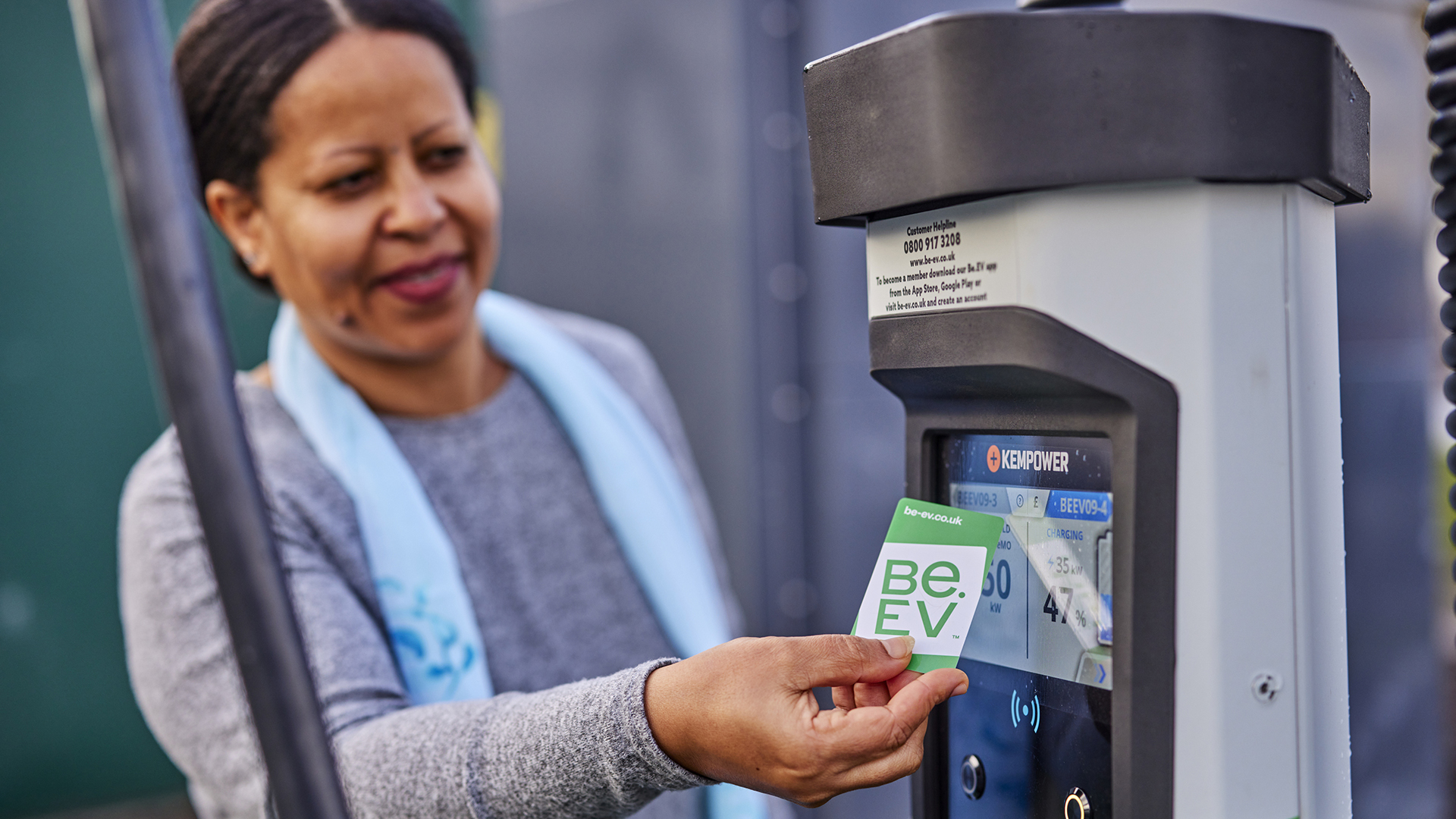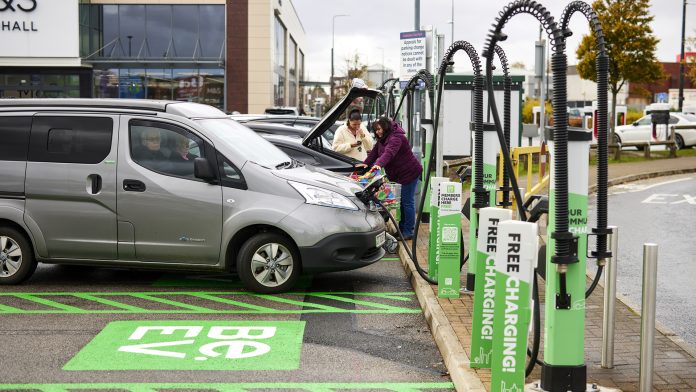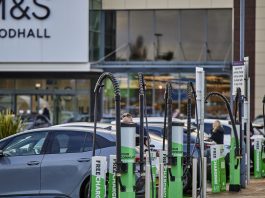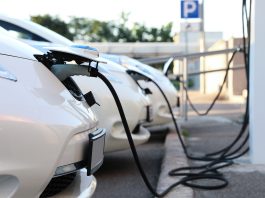Adrian Fielden-Gray, COO of Be.EV, provides vital insights into how the UK can solve its public EV charging problems.
The EV revolution is here. More than half of UK car buyers are considering an EV as their next car, according to EY’s Mobility Consumer Index, and the zero-emissions vehicles (ZEV) mandate means that 100% of UK car sales will be electric by 2035.
Yet, the rate of EV uptake is slowing down, with sales to private buyers down 25% in January 2024 compared to January 2023, according to the Society of Motor Manufacturers and Traders. Why is this the case?
Many reasons have been cited, including the purchasing cost of electric vehicles, concerns about increasing electric bills from charging at home, and the high cost of repairs. Unfortunately, one reason often brought up is the government’s failure to facilitate the growth of a public EV charging infrastructure properly.
The most recent EVXperience report from Zenith shows the main problem here is that there simply aren’t enough public chargers, especially outside of London. Furthermore, the public chargers that are there mainly consist of lamppost chargers that take a long time to charge an EV and will be little more than street litter in a few years as EV batteries become more advanced.
Only 14% use the public EV charging network as their main electricity supply, and the most common reasons for EV drivers not feeling confident about making longer trips are unreliable public charging (36%) and range anxiety (34%).
Why is this the case? More importantly, how do we put it right? Every taxpayer who’s convinced the net zero transition will cost them a fortune will be relieved to hear that this doesn’t need billions of pounds to fix. We can give EV drivers the public charging network they deserve – all that’s needed is a mindset shift.
Abandon the obsession with motorway charging
The government has chained itself to the idea that ultra-rapid charging hubs (containing chargers that charge an average EV in less than 30 minutes) need to be on motorway service stations. This philosophy is fundamentally misguided.
The government has poured millions into the Rapid Charging Fund, including a further £70m that was announced at COP28. However, this policy ignores the fact that the National Grid is outdated, and there simply isn’t enough electricity to achieve this.
The government has already failed to achieve its original target of having six ultra-rapid chargers at every motorway stop by the end of 2023, and yet it is still pressing ahead with an unachievable plan. Even if it could be done, there simply isn’t enough space.
The National Grid has forecasted that there will be 36 million EVs on UK roads by 2040 – how are we supposed to cater to this demand if we only put charging hubs on motorways?
The Government should shift their focus to also installing ultra-rapid chargers on land within a mile of motorways. There is plenty of land here that is sufficiently connected to the National Grid and can serve the same purpose of charging EVs making long journeys on the motorway.

At Be.EV, we’ve already been doing this with our hub at Sale Water Park, which is just a few minutes off the M60, and an upcoming site at Decathlon Stockport is even closer to the motorway.
Focusing on sites like these is an easy way for the government to get more chargers to serve long-distance EV drivers without burning cash to try and fail to install enough chargers at motorway service stations.
This is only a tweak to the government’s policy in the grand scheme of things, and it will ensure there are more chargers in places where EV drivers will actually use them.
Streamline planning permission
Second, planning permission rules are needlessly complicated and act as a large stumbling block to the roll-out of the public charging infrastructure.
Charge point operators have a lengthy backlog of planning permission applications to build chargers on land across the country. These potential sites are often for land that isn’t being used for anything else and are well-placed to serve communities with a high demand for EV charging.
However, in many cases, we get told that the local authority doesn’t have the ability or resources to consider our application.
Sometimes, it can be even more frustrating than this – I can recall several occasions when it took one local authority so long to get back to us on a planning permission application that expired the power application we had made for the site.
This meant that we had wasted valuable time and money and ended up having to start the whole process over again.
These barriers mean that it can take up to 18 months, sometimes longer, to get chargers in the ground when it should take half the time. This isn’t the fault of councils; it has been well-documented how they are struggling with capacity and that many are on the verge of bankruptcy.
The government needs to streamline the planning permission rules so we can put more chargers in the ground without adding an administrative burden on council workers who don’t have the necessary expertise.
This isn’t without precedent. Laws were recently changed to facilitate the roll-out of telecom masts – local authorities must now approve the construction of masts under 15m tall within 56 days unless there’s a good reason to reject it. There’s no reason why we can’t do the same for EV chargers.
Jeremy Hunt also announced that these rules would be streamlined for EV chargers in last year’s Autumn Statement, but we have seen no progress here.
This is such an easy fix that will pay immediate dividends. The government needs only to put pen to paper and get the legislative change underway – EV drivers have been waiting too long for this.
Retailers and landowners need to step up too
It would be unfair to say that the roll-out of the public EV charging network is only the responsibility of the government – the private sector has a role to play. Fortunately, this is not a burden, but rather, it is a business opportunity.
Retailers and landowners have the opportunity to turn their sites into destinations for EV drivers – they can instantly increase the number of people stopping in their car parks by giving them access to charging.
Given that ultra-rapid chargers typically charge an average EV in 20 to 30 minutes, drivers are likely to pop inside stores for a coffee or to do a little bit of shopping while they wait. In an age where more people than ever are shopping online, why would retailers not take every opportunity they could to drive people to their stores?
Furthermore, many charging networks will pay for the installation and maintenance of the chargers themselves and either pay rent or share a portion of the revenue from each charge with the landowner. Therefore, retailers don’t have to deal with any of the logistics themselves and are guaranteed to make a profit.
This is equally true for the owners of other pieces of land, such as farmers or property funds – chargers are a consistent source of revenue with no upfront cost, which also helps their ESG credentials. It’s a no-brainer.
Public EV charging: It’s not that complicated
Clearly the disjointed roll-out of the public EV charging network is a source of frustration for EV drivers, local authorities and EV charging networks alike. The current framework isn’t working, and the Government’s response seems to be to throw more money at the problem.
Fortunately, this can easily be fixed with a change in mindset. The government doesn’t need to spend millions on a policy that isn’t working. They only need to listen to the private sector and open up land to EV charging, both by abandoning the fixation on motorway charging hubs and cutting the red tape getting in the way of charger installation.
Landowners and retailers also need to open their eyes to the business opportunity in front of them. Chargers in their car parks are a guaranteed revenue stream with no monetary loss and no fuss.
This is a problem with easy solutions. Let’s pivot our approach, and before we know it, our public EV charging network will be the reason people buy EVs, not the reason they hesitate to make the switch.









